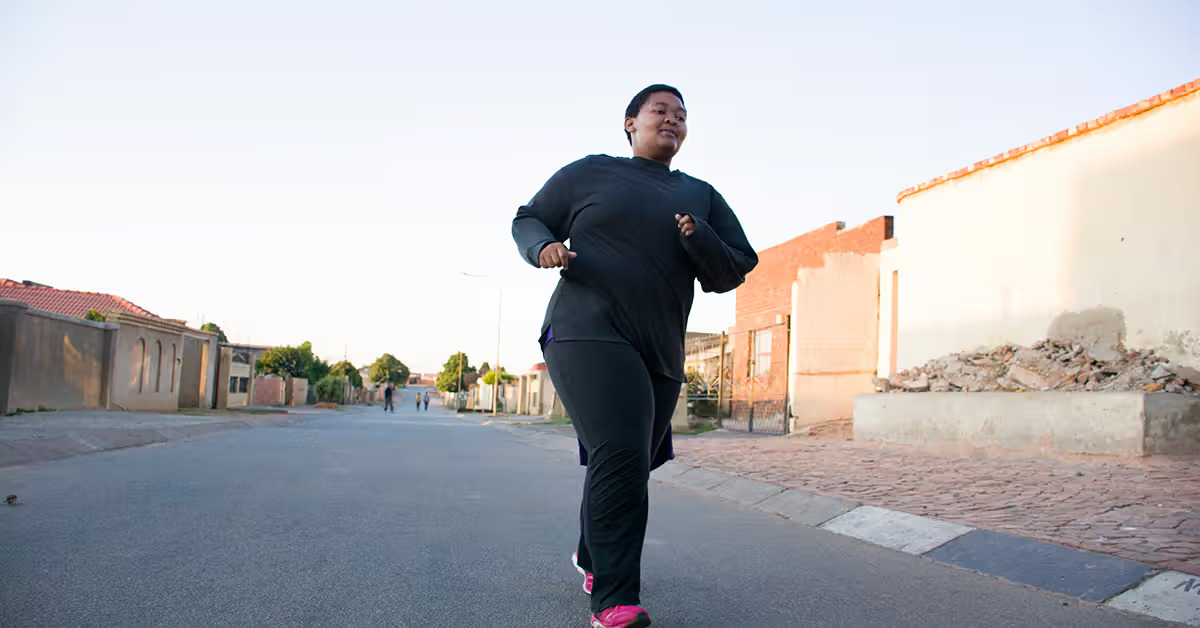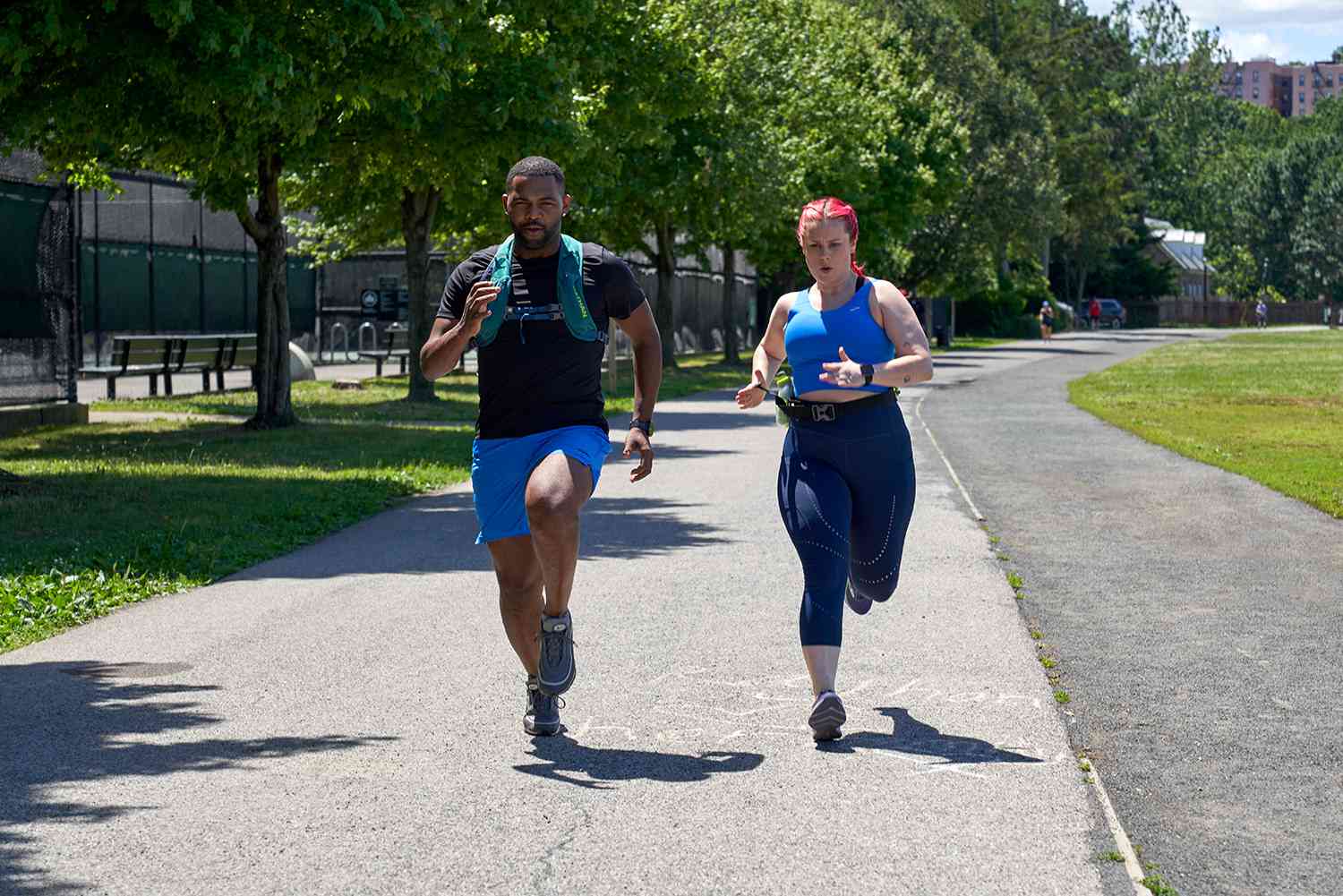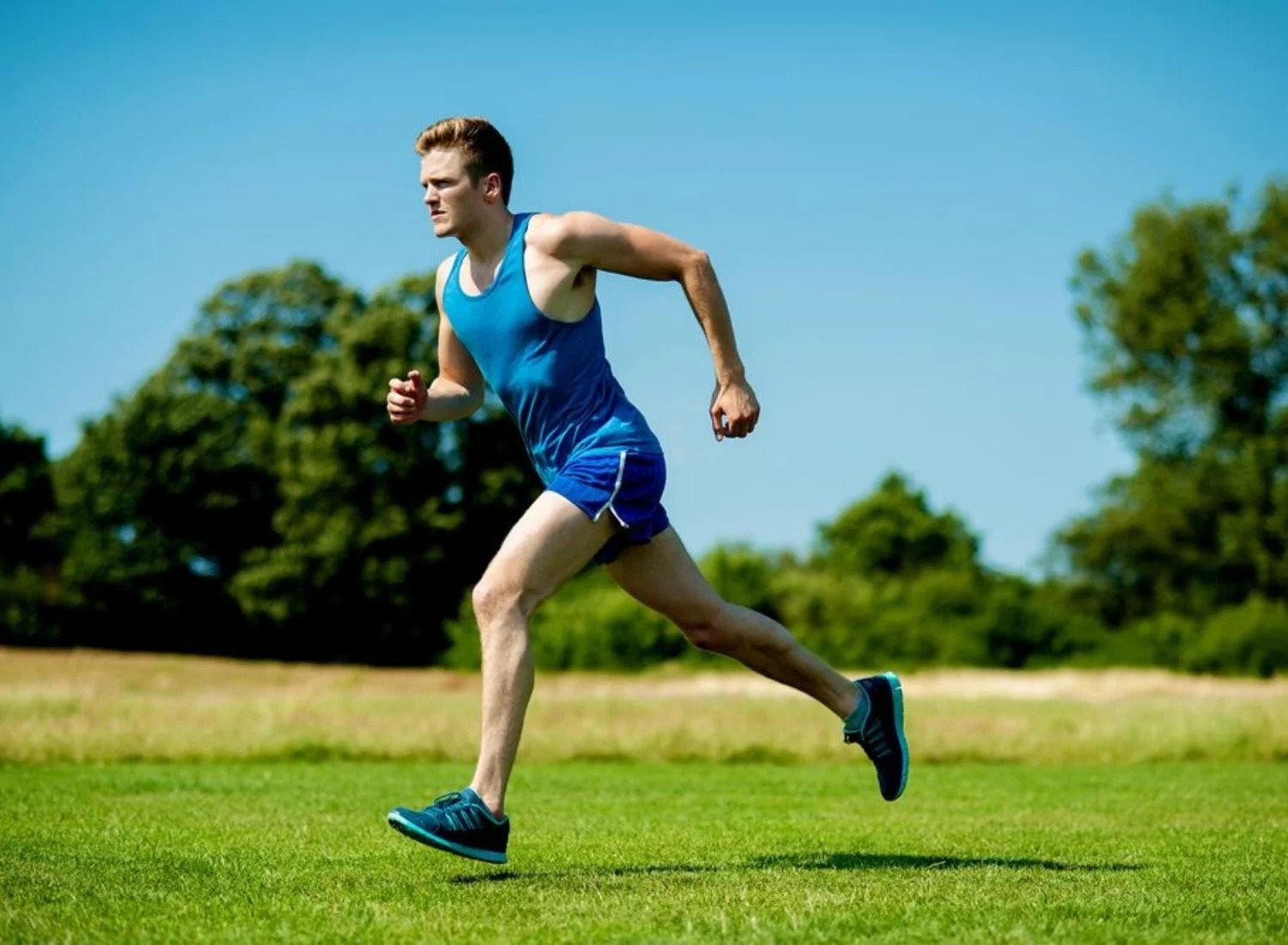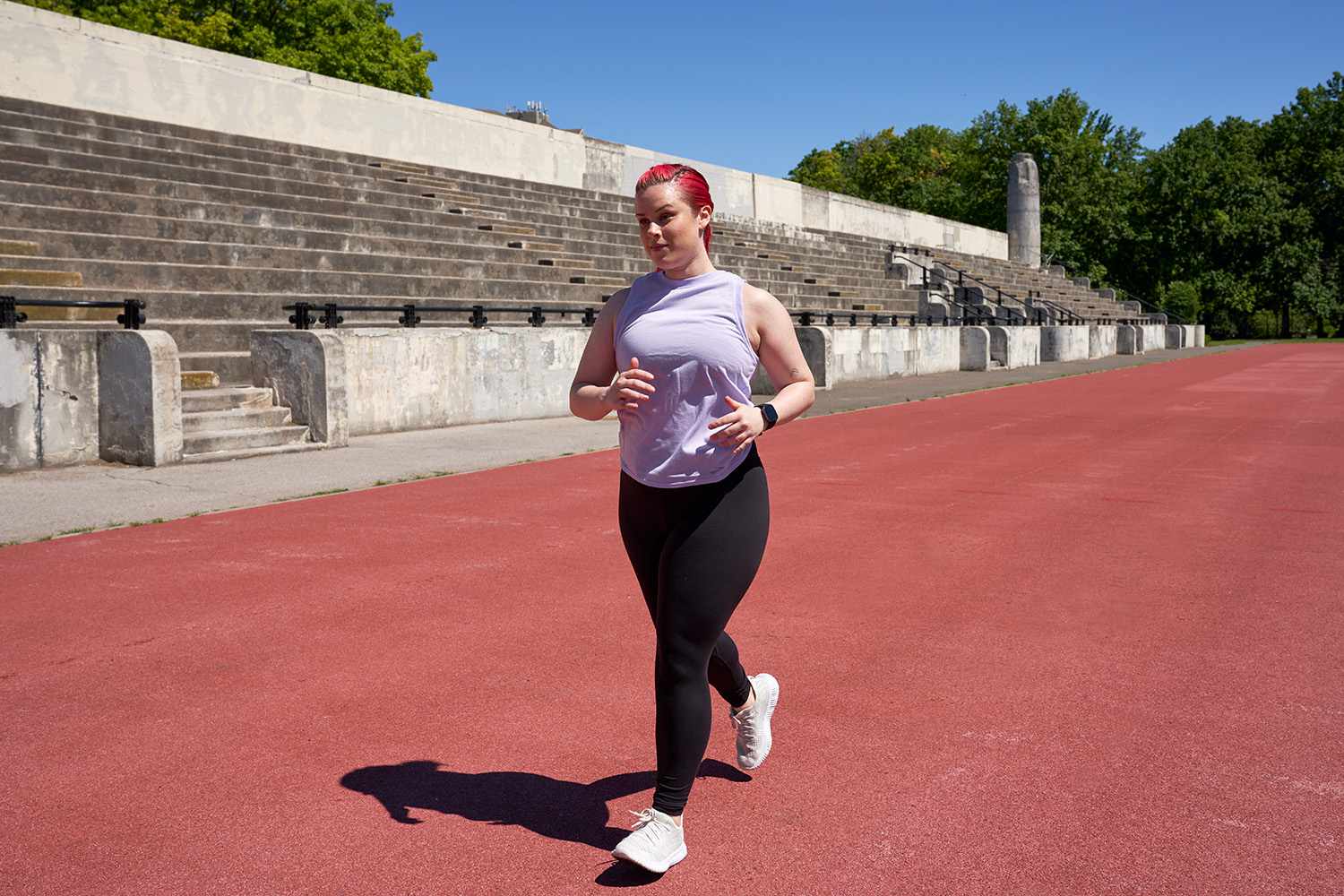

Featured
What Pace Is Considered Jogging
Published: October 4, 2023
Discover what pace is considered jogging and how it can be featured in your fitness routine. Enhance your running performance and achieve your goals.
Introduction
Welcome to the world of jogging, where the rhythm of your steps carries you on a path of fitness and well-being. Jogging is a popular form of exercise that offers numerous health benefits, but did you know that your pace plays a crucial role in maximizing the effectiveness of this activity? Whether you’re a beginner or an experienced runner, understanding what pace is considered jogging is key to optimizing your workouts.
Jogging can be defined as a form of running that is slower and less intense than sprinting. It is a moderate intensity aerobic exercise that elevates your heart rate and increases your breathing, while still allowing you to maintain a conversation. Unlike running, which typically involves a quicker and more intense pace, jogging is a great option for those seeking a low-impact workout that can be sustained for longer durations.
The importance of pace in jogging cannot be understated. It is not simply about how fast or slow you run, but rather finding the right balance that challenges your cardiovascular system without pushing yourself to exhaustion. Your jogging pace should allow you to maintain a steady and comfortable rhythm throughout your run, ensuring that you can sustain the activity for the desired duration.
Determining your jogging pace might seem like a simple task, but it is often influenced by a variety of factors such as your fitness level, age, and overall health. It’s important to strike a balance between pushing yourself to improve and avoiding overexertion, as this can lead to burnout or potential injuries. By understanding what pace is considered jogging, you can tailor your workouts to suit your needs and goals.
In the following sections, we will delve deeper into how to determine your jogging pace, the factors that can affect it, the benefits of jogging, common mistakes to avoid, and tips for finding the right pace for your runs. So, lace up your running shoes, hit the pavement, and let’s explore the world of jogging and the pace that defines it.
Definition of Jogging
Before we dive further into the topic, let’s establish a clear understanding of what jogging actually means. Jogging is a form of running that is characterized by a slower and more relaxed pace compared to sprinting. While there is no universally agreed upon speed that distinguishes jogging from running, it is generally accepted that jogging falls within a range of 4 to 6 miles per hour (6.4 to 9.7 kilometers per hour).
Unlike running, which often involves a more aggressive and powerful stride, jogging maintains a steady and rhythmic motion. It is a great way to engage in cardiovascular exercise while minimizing impact on the joints. The moderate intensity of jogging allows individuals to sustain the activity for longer durations compared to faster-paced runs, making it an ideal choice for those seeking a workout that focuses on endurance and overall fitness.
One of the key aspects that differentiates jogging from running is the ease of conversation. When jogging, your breathing and heart rate should increase, but you should still be able to carry on a conversation without excessive shortness of breath. This indicates that you are jogging within a comfortable intensity level that allows for adequate oxygen supply to your muscles.
It’s important to note that jogging can be done by individuals of all fitness levels, from beginners to advanced runners. It serves as a great starting point for those new to running or those recovering from an injury, as it provides a low-impact option to gradually build endurance and cardiovascular fitness.
Jogging can be enjoyed in various settings, whether it be on a treadmill, a track, or in the great outdoors. It offers the flexibility to choose a terrain and route that suits your preferences, allowing you to experience the benefits of being active while connecting with nature or enjoying the energetic atmosphere of a bustling city.
As we continue exploring what pace is considered jogging, keep in mind that technical definitions may vary. The most important factor is finding a pace that aligns with your abilities and goals, ensuring that it is sustainable and comfortable for the duration of your run. Now, let’s delve deeper into the importance of pace in jogging and how it can impact your overall fitness.
The Importance of Pace in Jogging
When it comes to jogging, pace is more than just a number. It plays a critical role in determining the effectiveness of your workout and maximizing the benefits you receive. Finding the right pace for your runs is key to optimizing your cardiovascular fitness, endurance, and overall health.
One of the primary reasons why pace is important in jogging is because it directly impacts your heart rate. Jogging at a moderate intensity elevates your heart rate to a level that stimulates cardiovascular adaptations and improves the efficiency of your cardiovascular system. This, in turn, leads to benefits such as increased lung capacity, improved circulation, and a reduced risk of cardiovascular diseases.
Furthermore, maintaining a consistent pace during your jogging sessions allows you to better control and distribute your efforts. By finding your optimal jogging pace, you can ensure that you are exerting the right amount of effort throughout your run. This helps you avoid early fatigue and allows you to sustain the activity for a longer duration, building your endurance over time.
Another advantage of jogging at the right pace is that it helps you achieve your fitness goals more effectively. If your aim is to lose weight, jogging at a moderate pace for a longer period of time can help you burn calories and fat. On the other hand, if your goal is to build endurance and improve your running performance, incorporating intervals of faster-paced running into your jogging routine can help you challenge yourself and make progress.
Moreover, the pace at which you jog can also impact the risk of injury. Running too fast or pushing yourself beyond your limits increases the likelihood of overuse injuries and muscular strain. By maintaining a pace that is appropriate for your current fitness level, you reduce the risk of injury and make jogging a safer and more enjoyable exercise.
Additionally, jogging at a comfortable pace allows you to fully engage in the activity and enjoy the experience. It allows you to appreciate the scenery, clear your mind, and create a rhythm that is sustainable and enjoyable. Jogging at a pace that aligns with your abilities and preferences promotes a positive and rewarding running experience, motivating you to continue making jogging an integral part of your fitness routine.
In summary, the importance of pace in jogging cannot be emphasized enough. It affects your heart rate, endurance, fitness goals, risk of injury, and overall enjoyment of the activity. By finding the right pace for your runs, you can optimize your workouts and reap the numerous benefits that jogging has to offer. Now let’s explore how to determine your jogging pace based on your individual needs and abilities.
Determining an Individual’s Jogging Pace
When it comes to jogging, finding the right pace for your runs is crucial. Your jogging pace should challenge your cardiovascular system without pushing you to exhaustion. Determining your individual jogging pace is influenced by various factors, including your fitness level, age, and overall health. Here are some methods you can use to find the pace that works best for you:
- Perceived Exertion: One way to determine your jogging pace is through perceived exertion. This method involves assessing how hard or easy the activity feels during your run. On a scale of 1 to 10, with 1 being very easy and 10 being very hard, aim for a perceived exertion level of around 5 or 6 for a moderate jogging pace. This should allow you to maintain a conversation while still feeling a moderate level of effort.
- Talk Test: The talk test is a simple and practical method to determine if you’re jogging at an appropriate pace. While jogging, check if you can speak in full sentences without gasping for breath. If you can comfortably hold a conversation without struggling for words, you’re likely jogging at a moderate pace. If you’re unable to speak without excessive breathlessness, you may be running too fast and should slow down.
- Heart Rate Monitoring: Monitoring your heart rate during your jog can provide valuable insights into your level of exertion. The target heart rate zone for jogging at a moderate pace is generally around 50-70% of your maximum heart rate. To determine your maximum heart rate, subtract your age from 220. During your jog, use a heart rate monitor or check your pulse periodically, ensuring that it stays within the desired range.
- Pace-Based Apps and Devices: With the advancements in technology, there are now numerous apps and wearable devices that can track and guide your jogging pace. These tools use GPS and accelerometers to monitor your speed and distance, allowing you to set a target pace and receive real-time feedback. Utilizing these apps or devices can help you stay on track and ensure that you are jogging at the desired pace.
It’s important to remember that your jogging pace may fluctuate based on factors such as fatigue, terrain, and weather conditions. Listen to your body and make adjustments as necessary. Don’t be afraid to start at a slower pace if you’re new to jogging, and gradually increase your speed as your fitness improves.
By using a combination of these methods and paying attention to how your body feels during your runs, you can determine an individual jogging pace that is suitable for your needs and goals. Remember, finding the right pace is not about comparing yourself to others, but about finding a rhythm that works for you and allows you to enjoy the benefits of this fantastic form of exercise.
Factors Affecting Jogging Pace
When it comes to jogging, there are several factors that can influence your pace. Understanding these factors can help you better determine and adjust your jogging speed to maximize your performance and results. Here are some key factors that can affect jogging pace:
- Fitness Level: Your current fitness level plays a significant role in determining your jogging pace. Beginners or individuals who haven’t been active for a while may naturally start at a slower pace until they build endurance and improve cardiovascular fitness. As your fitness level increases, you may find that you can sustain a faster pace without feeling as fatigued.
- Age: Age can impact jogging pace, as older individuals may have a slower natural pace due to changes in muscle mass, joint flexibility, and cardiovascular capacity. However, it’s worth noting that age is not a definitive factor, and many older adults are still able to maintain a brisk jogging pace.
- Gender: On average, men tend to have a higher jogging pace compared to women. This difference can be attributed to variations in muscle mass, body composition, and hormone levels. However, it’s important to remember that individual abilities and training can override any gender-related differences.
- Body Composition: Your body weight and composition can affect your jogging pace. Generally, individuals with less body fat and more lean muscle mass tend to have a faster pace. Carrying excess weight may require more effort and impact your ability to sustain a faster jogging speed.
- Terrain: The type of terrain you’re jogging on can significantly impact your pace. Running on flat, even surfaces like a track or treadmill allows for a smoother stride and potentially a faster pace. On the other hand, running uphill or on uneven terrain can slow down your pace as your muscles work harder to maintain balance and stability.
- Weather Conditions: Weather conditions, such as heat, humidity, and wind, can affect your jogging pace. Excess heat can make it more challenging for your body to cool itself, resulting in a slower pace. Similarly, strong winds can create resistance, requiring more effort to maintain the same speed. It’s important to listen to your body and adjust your pace accordingly during extreme weather conditions.
- Mental Factors: Your mental state, motivation, and focus can also impact your jogging pace. Feeling energized, motivated, and mentally prepared can help you maintain a faster pace. Conversely, distractions, lack of focus, or mental fatigue can lead to a slower pace.
It’s important to remember that everyone is unique, and these factors can impact each individual differently. It’s essential to listen to your body, be aware of your surroundings, and adjust your jogging pace accordingly. Regular training, consistency, and gradual progress can help you improve your pace over time.
By understanding the factors that affect jogging pace, you can make informed adjustments to optimize your performance. Whether it’s improving fitness, adapting to different terrains, or mitigating the impact of weather conditions, being mindful of these factors allows you to tailor your workouts and achieve your jogging goals.
Health Benefits of Jogging
Jogging offers a wide array of health benefits, making it a popular choice for individuals looking to improve their physical fitness and overall well-being. Here are some of the significant health benefits associated with regular jogging:
- Cardiovascular Fitness: Jogging is an excellent aerobic exercise that elevates your heart rate and increases blood circulation. Regular jogging helps strengthen your heart, improving its efficiency and reducing the risk of cardiovascular diseases. It can also lower blood pressure and cholesterol levels, further benefiting your cardiovascular health.
- Weight Management: Jogging is an effective way to manage weight and burn calories. Running at a moderate pace for a consistent duration helps in shedding excess body weight and maintaining a healthy body composition. As a weight-bearing exercise, jogging also strengthens bones and muscles, promoting overall body strength.
- Mental Well-being: Jogging is known to have a positive impact on mental health. It stimulates the release of endorphins, commonly known as “feel-good” hormones, which can improve mood, reduce stress, and alleviate symptoms of anxiety and depression. Regular jogging can increase self-confidence, boost cognitive function, and enhance overall mental well-being.
- Improved Lung Function: Jogging is a great way to enhance your lung capacity and respiratory function. As you engage in regular jogging, your lungs work harder to supply oxygen to the muscles. This helps strengthen your lungs, allowing them to take in more air and improve overall respiratory efficiency.
- Increase in Energy Levels: Jogging can provide a natural energy boost. Regular aerobic exercise, like jogging, improves circulation and oxygen flow, delivering nutrients and fuel to your body more efficiently. This increase in energy production helps combat fatigue and leaves you feeling more energized and focused throughout the day.
- Better Sleep Quality: Jogging can lead to improved sleep patterns and quality. Engaging in regular physical activity helps regulate sleep-wake cycles, making it easier to fall asleep and promoting deeper, more restful sleep. Better sleep quality allows your body to recover and recharge, contributing to overall well-being.
- Longevity and Disease Prevention: Engaging in regular jogging can increase your life expectancy and reduce the risk of chronic diseases. Studies have shown that regular aerobic exercise, such as jogging, is associated with a decreased risk of heart disease, stroke, type 2 diabetes, certain cancers, and other chronic conditions.
It’s important to note that to reap these health benefits, consistency is key. Incorporating jogging into your weekly routine and gradually increasing the duration and intensity over time will yield the best results. Remember to consult with a healthcare professional before starting any new exercise program, especially if you have any underlying health conditions.
Jogging offers more than just physical benefits—it provides an opportunity to connect with nature, clear your mind, and enjoy the simple pleasure of movement. So, lace up your running shoes, step outside, and discover the incredible health benefits that jogging has to offer.
Common Mistakes in Jogging Pace
When it comes to jogging, finding the right pace is crucial for a safe and effective workout. However, many individuals make common mistakes that can negatively impact their jogging experience and hinder their progress. Here are some of the most common mistakes in jogging pace to be aware of:
- Starting Too Fast: One of the biggest mistakes is starting your jog at a pace that is too fast. This can lead to early fatigue, excessive breathlessness, and increased risk of injury. It’s important to begin at a comfortable pace that allows you to maintain a steady rhythm and gradually warm up your body.
- Ignoring Personal Fitness Level: Failing to consider your current fitness level can result in pushing yourself too hard or not challenging yourself enough. Each individual is at a different fitness level, so it’s crucial to listen to your body and adjust your pace accordingly. Don’t compare yourself to others; focus on your own progress.
- Being Inconsistent with Pace: Inconsistency in pace can disrupt your running flow and hinder your progress. It’s essential to maintain a steady and consistent pace throughout your jog, rather than constantly fluctuating between fast and slow speeds. Consistency allows you to track and measure your progress accurately.
- Ignoring Rest and Recovery: Overtraining and neglecting rest days can be detrimental to your jogging pace. Your body needs time to recover and repair in order to perform optimally. Failing to allow for proper rest can lead to burnout, fatigue, and increased risk of injuries. Incorporate rest days into your jogging routine to allow your body to recover and prevent overexertion.
- Neglecting Warm-Up and Cool-Down: Skipping a proper warm-up and cool-down can affect your jogging pace and increase the risk of muscle strains and injuries. A dynamic warm-up helps prepare your muscles for activity, and a cool-down allows for gradual recovery. Take the time to properly warm up before each jog and cool down afterward to maintain good pace and prevent injuries.
- Not Listening to Your Body: Ignoring signals from your body can lead to pushing yourself beyond your limits or dismissing signs of fatigue or discomfort. It’s important to tune in to how you’re feeling during your jog. If you’re experiencing excessive shortness of breath, pain, or dizziness, slow down or stop and seek medical attention if necessary.
- Focusing Too Much on Speed: While it’s natural to want to improve your pace, solely focusing on speed can be counterproductive. Quality over quantity is key in jogging. It’s better to prioritize proper form, endurance, and consistent execution than solely aiming for a faster pace. As your fitness improves, speed will naturally come.
By being aware of these common mistakes, you can avoid pitfalls and make the most out of your jogging experience. Pay attention to your body, maintain a consistent and suitable pace, and always prioritize safety and enjoyment. Remember, jogging is a journey, and finding the right pace is an ongoing process that requires patience and continuous improvement.
Tips for Finding the Right Jogging Pace
Finding the right jogging pace is essential for a safe, effective, and enjoyable workout. It’s a balance between challenging yourself and ensuring that you can maintain a steady rhythm throughout your run. Here are some tips to help you find the perfect jogging pace:
- Perceived Exertion: Use the perceived exertion scale to gauge your intensity during your jog. Aim for a moderate level of effort, where you can still hold a conversation without excessive breathlessness. Adjust your pace accordingly to maintain this level of exertion.
- Talk Test: The talk test is a simple and reliable method to check if your pace is appropriate. If you can talk in full sentences without struggling for breath, you’re likely jogging at a good pace. If you’re unable to speak without excessive breathlessness, slow down your pace.
- Interval Training: Incorporating interval training can help you improve your jogging pace. Alternate between periods of faster running and slower jogging or walking. This challenges your cardiovascular system and helps build endurance, allowing you to sustain a faster pace during your overall jog.
- Use a Heart Rate Monitor: Monitoring your heart rate during your jog can provide valuable insights into your intensity level. Use a heart rate monitor to ensure that you’re jogging within your target heart rate zone, which is typically around 50-70% of your maximum heart rate. This helps you stay in a moderate effort zone.
- Gradual Progression: Gradually increase your jogging pace over time. Start at a comfortable pace that allows you to maintain good form and gradually increase your speed as your fitness level improves. Push yourself, but avoid drastic changes that may lead to overexertion and potential injuries.
- Listen to Your Body: Pay attention to how your body feels during your run. If you’re consistently experiencing pain, excessive fatigue, or discomfort, it may be a sign that you’re pushing too hard. Adjust your pace accordingly and prioritize your safety and well-being.
- Maintain Good Form: Proper running form can help you maintain a steady pace and reduce the risk of injuries. Keep your posture upright, shoulders relaxed, and arms at a 90-degree angle. Focus on landing mid-foot and propelling yourself forward, maintaining a fluent and efficient stride.
- Run by Effort, Not by Pace: Instead of solely focusing on numbers, listen to your body and run by effort. While pace can be a useful reference, it can be affected by various factors like terrain and weather. Running by effort allows you to adjust your pace based on how you feel rather than sticking rigidly to a specific speed.
- Give Yourself Time: Finding the right jogging pace is a journey that requires patience. Be kind to yourself and give yourself time to adapt and improve. Stick to a consistent jogging routine, and you’ll gradually become more attuned to your body and find the pace that works best for you.
Remember, the right jogging pace is individual and may evolve as your fitness level improves. Experiment with different strategies, pay attention to your body, and don’t be afraid to make adjustments along the way. By finding the perfect jogging pace, you’ll enhance your fitness, enjoy your runs more, and maximize the benefits of this wonderful form of exercise.
Conclusion
Throughout this exploration of what pace is considered jogging, we’ve learned that finding the right pace is crucial for a rewarding and effective workout. Jogging offers a multitude of physical and mental health benefits, making it a fantastic form of exercise for individuals of all fitness levels. By understanding the definition of jogging and the importance of pace, you can tailor your runs to suit your needs and goals.
Remember, jogging is not just about how fast or slow you run, but about finding a sustainable and comfortable pace that allows you to elevate your heart rate, challenge your cardiovascular system, and maintain a steady rhythm throughout your run. Factors such as fitness level, age, and overall health can influence your jogging pace, so it’s important to listen to your body and adjust accordingly.
We’ve explored various methods for determining your jogging pace, including the perceived exertion scale, talk test, heart rate monitoring, and pace-based apps or devices. These tools can help guide you in finding the optimal pace for your runs.
Additionally, we’ve discussed common mistakes to avoid, such as starting too fast, being inconsistent with pace, and neglecting rest and recovery. By being aware of these mistakes and focusing on proper warm-ups, cool-downs, and form, you can enhance your jogging experience and minimize the risk of injuries.
Finally, we’ve provided tips for finding the perfect jogging pace, such as using perceived exertion, incorporating interval training, and listening to your body. Remember, it’s a journey that requires patience and gradual progression, so be kind to yourself and give yourself time to adapt and improve.
In conclusion, jogging offers a multitude of benefits for both your physical and mental well-being, and finding the right pace is key to unlocking its full potential. So, lace up your running shoes, hit the pavement, and discover the joy and benefits of jogging at your own comfortable and sustainable pace.









